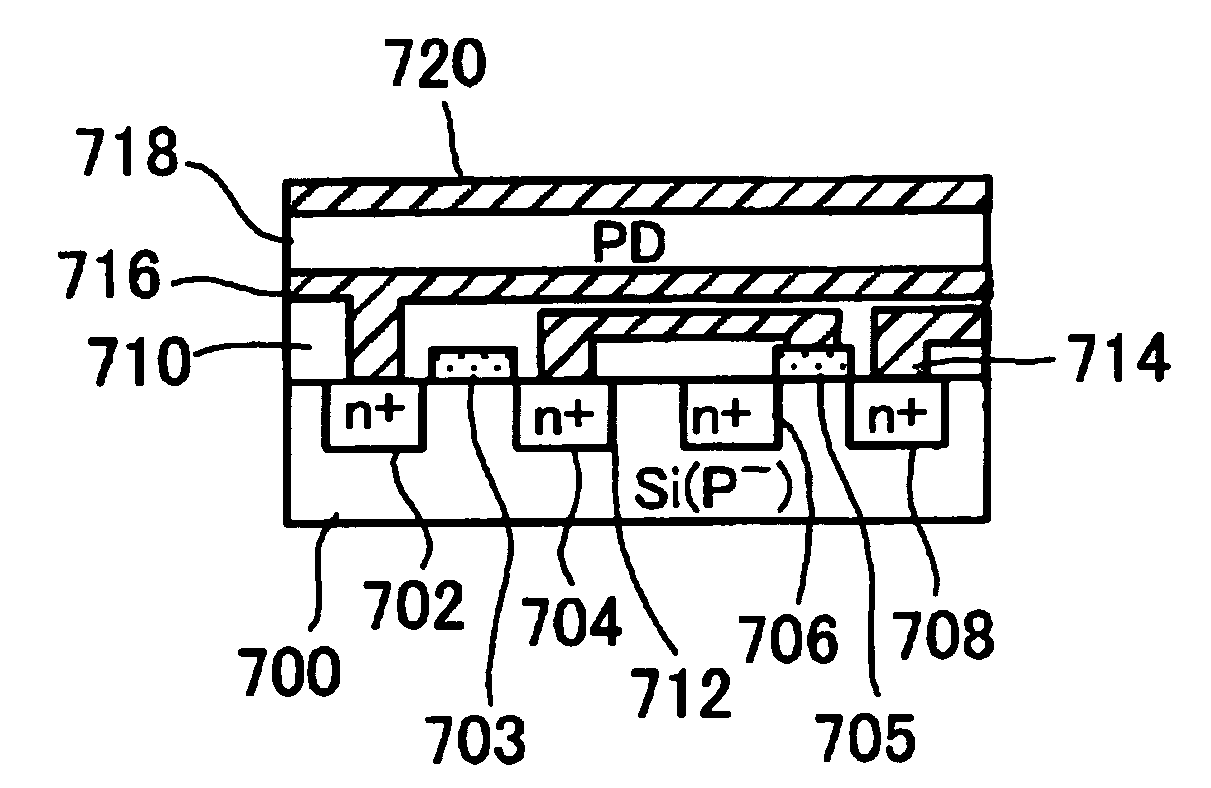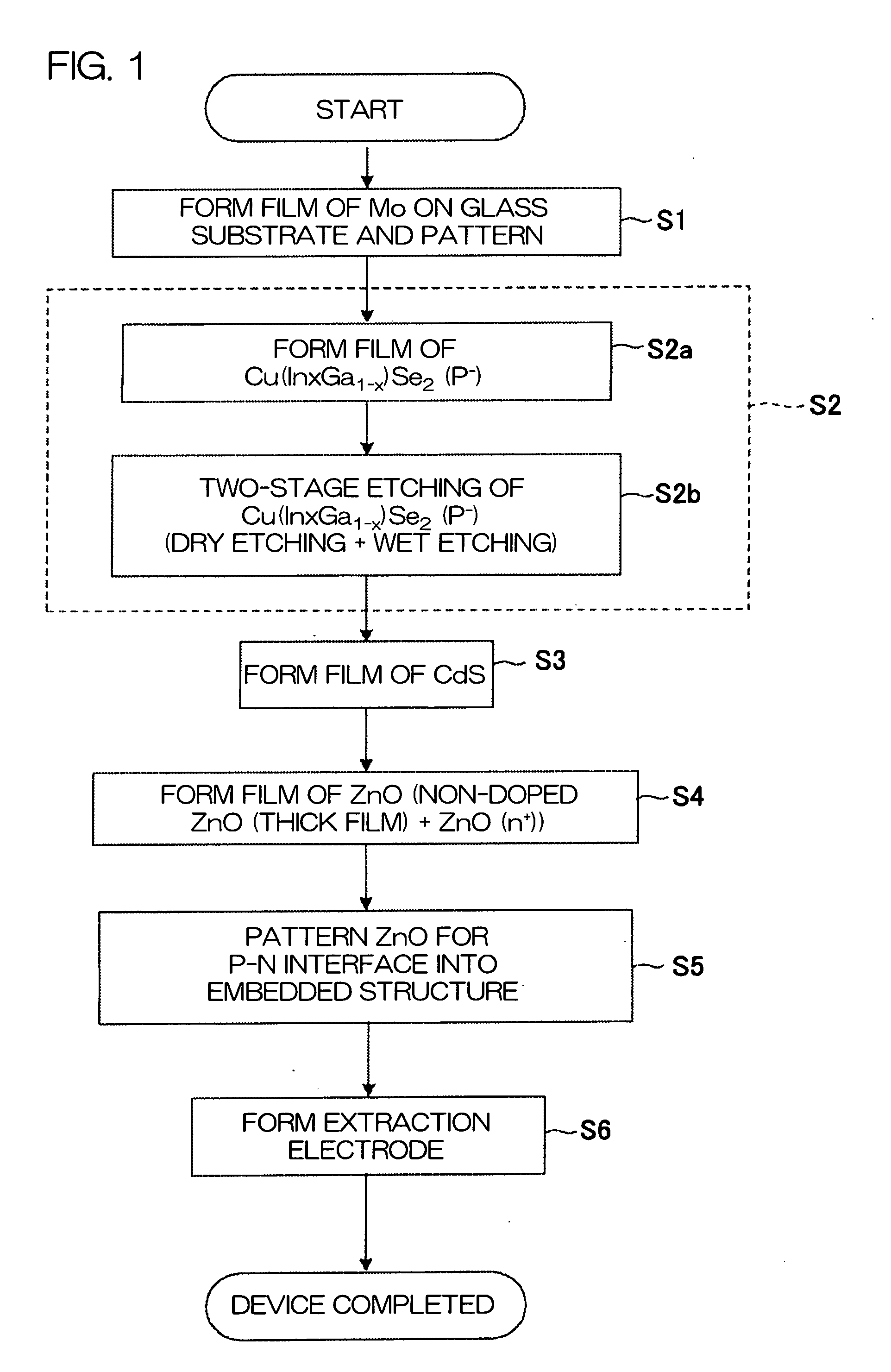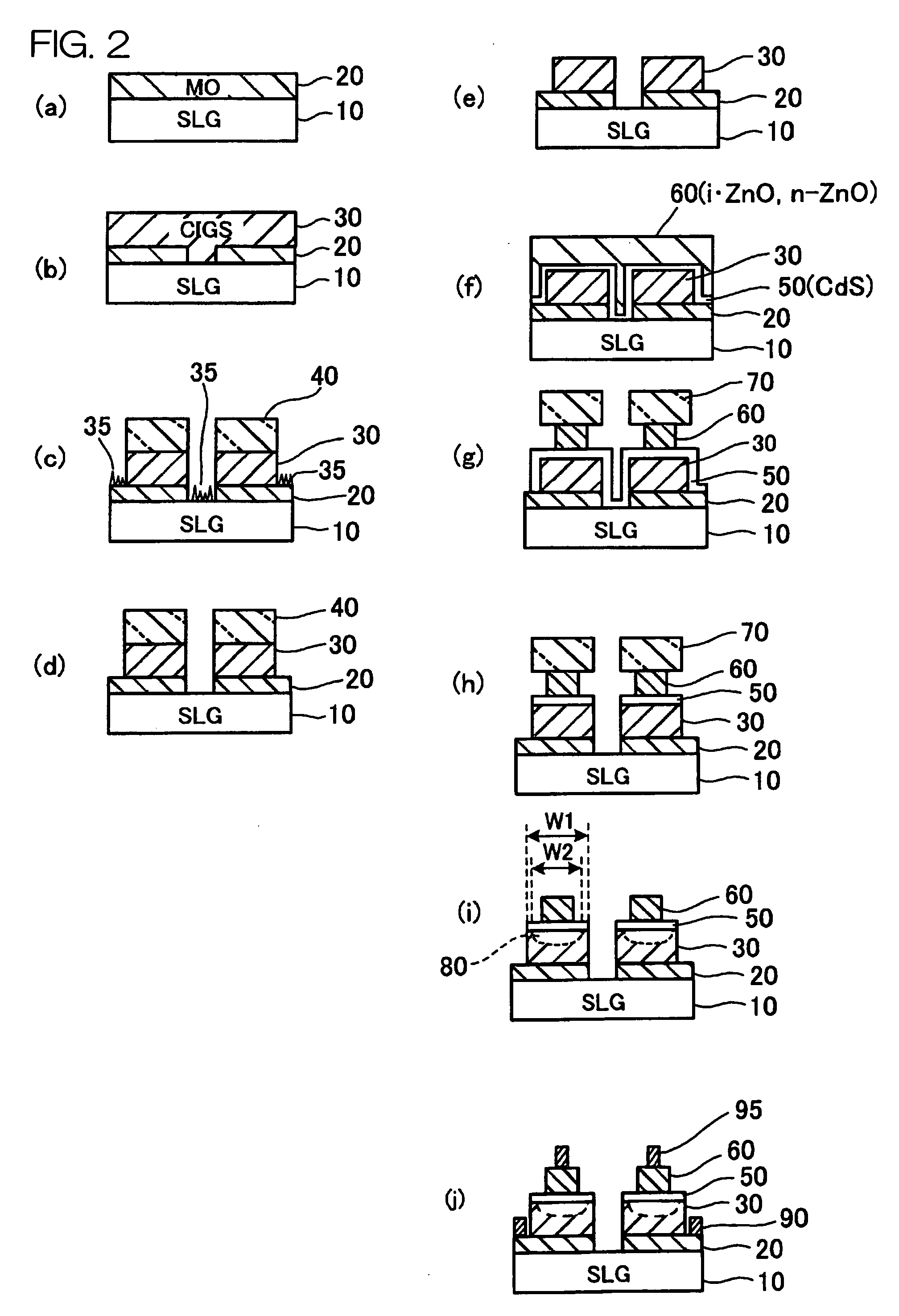Method for Manufacturing Photoelectric Converter and Photoelectric Converter
- Summary
- Abstract
- Description
- Claims
- Application Information
AI Technical Summary
Benefits of technology
Problems solved by technology
Method used
Image
Examples
embodiment 1
[0063]FIG. 1 is a flow chart showing an outline of a method for manufacturing a photoelectric converter according to the present invention.
[0064]In this manufacturing process, the respective ones of a laminated / formed lower electrode layer, a p-type compound semiconductor thin film (hereinafter referred to as a CIGS thin film) having a chalcopyrite structure serving as a light absorptive layer and a light-transmitting electrode layer (including both of a non-doped portion and a portion doped with an impurity to exhibit an n+ type) are patterned by photolithography for minimizing damages to the crystals of the CIGS thin film.
[0065]In the method for manufacturing a photoelectric converter according to the present invention, a Mo (molybdenum) layer for forming a lower electrode is formed by sputtering (about 0.6 μm) on a glass substrate, and thereafter patterned by photolithography (step S1). Thus, an electrically isolated island region of Mo is formed.
[0066]Then, a CIGS thin film is f...
embodiment 2
[0100]In this embodiment, an example of using the photoelectric converter according to the present invention as a photosensor having high sensitivity also in the near infrared region is described.
[0101]FIG. 5 is a diagram showing absorption coefficients of a CIS thin film (also applies to a CIGS thin film) with respect to the wavelengths of light. As is illustrated, it is understood that the CIS thin film (CIGS thin film) has a high sensitivity over a wide range from visible light to near infrared light.
[0102]With attention drawn to this point, a composite image sensor is formed by laminating the photoelectric converter of the present invention made of a compound semiconductor thin film on a silicon substrate formed with MOS transistors or the like in this embodiment.
[0103]FIG. 6 is a schematic sectional view of a general CMOS image sensor formed on a silicon substrate. FIG. 7 is a schematic sectional view of the composite image sensor according to the present invention formed by la...
PUM
 Login to View More
Login to View More Abstract
Description
Claims
Application Information
 Login to View More
Login to View More - R&D
- Intellectual Property
- Life Sciences
- Materials
- Tech Scout
- Unparalleled Data Quality
- Higher Quality Content
- 60% Fewer Hallucinations
Browse by: Latest US Patents, China's latest patents, Technical Efficacy Thesaurus, Application Domain, Technology Topic, Popular Technical Reports.
© 2025 PatSnap. All rights reserved.Legal|Privacy policy|Modern Slavery Act Transparency Statement|Sitemap|About US| Contact US: help@patsnap.com



